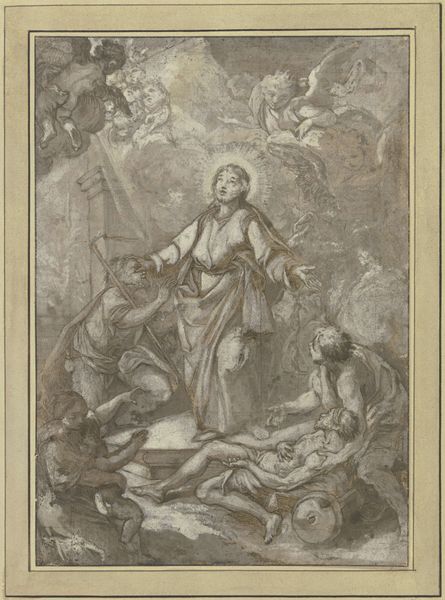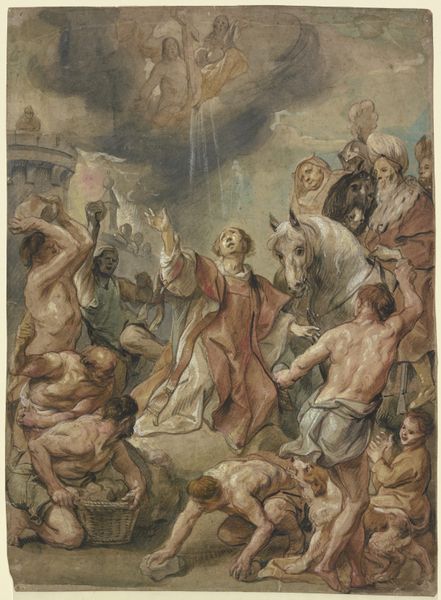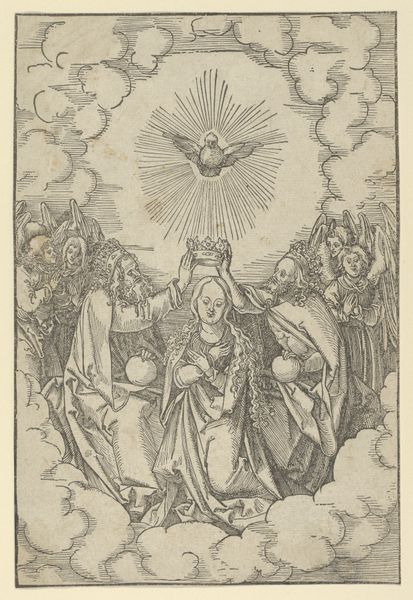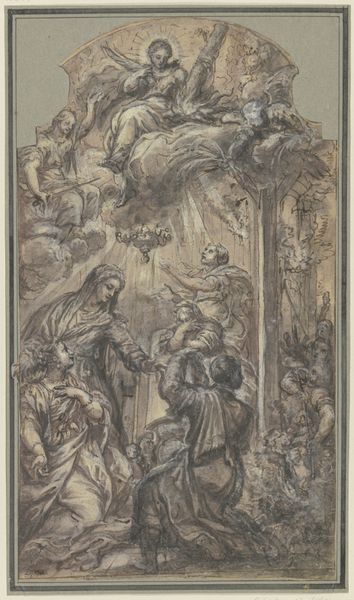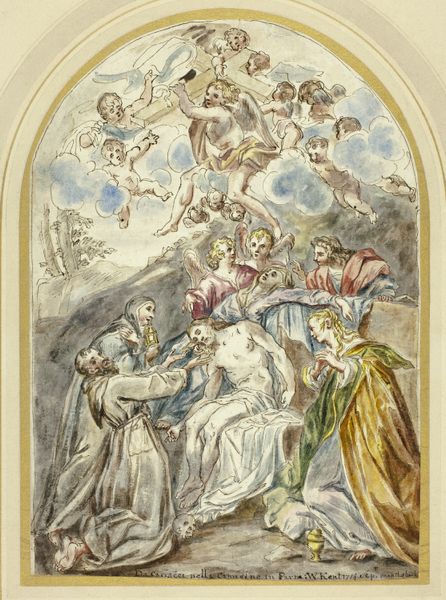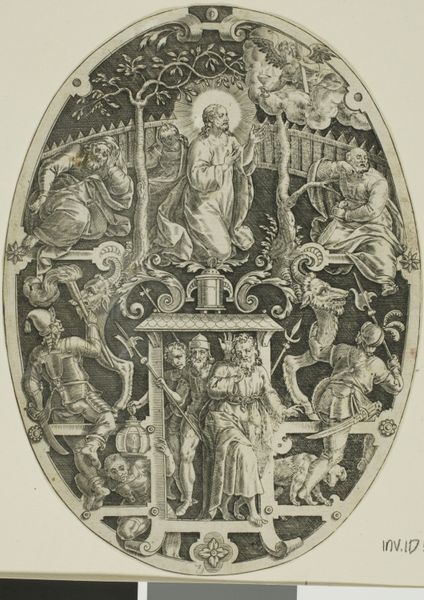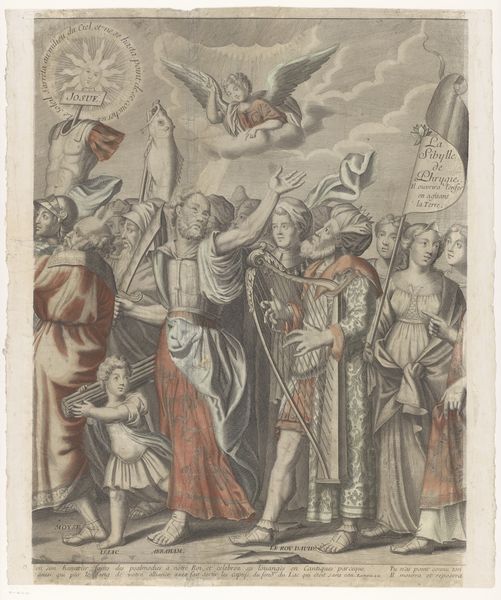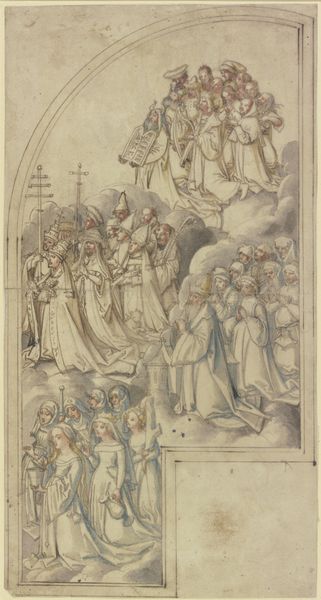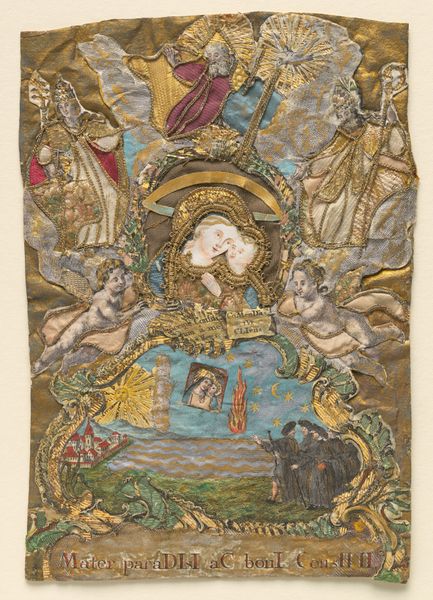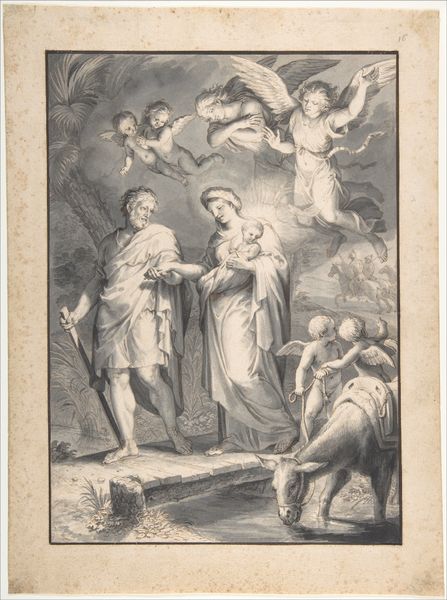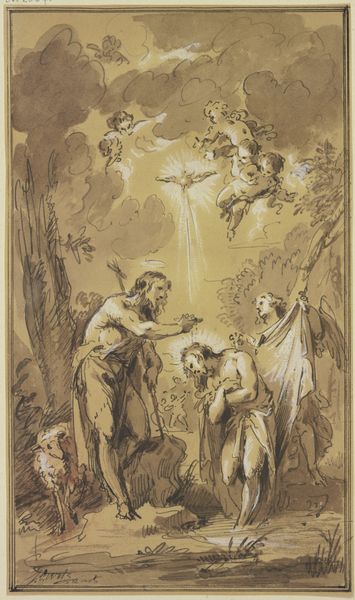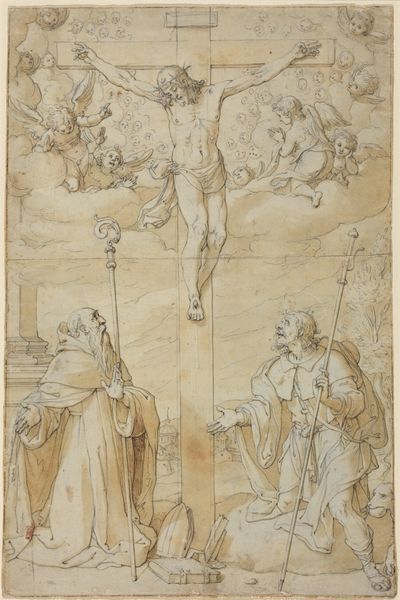
An Allegory of the Triumph over Heresy, with St. Domenic to the Fore 1650 - 1660
0:00
0:00
drawing, print, watercolor
#
drawing
#
allegory
#
baroque
# print
#
figuration
#
watercolor
#
history-painting
Dimensions: 11 1/2 x 7 11/16 in. (29.2 x 19.6 cm)
Copyright: Public Domain
Curator: At first glance, I am struck by the sheer number of figures here, all swirling around St. Domenic. There is something quite active in the composition. Editor: Yes, this is Abraham van Diepenbeeck’s, "An Allegory of the Triumph over Heresy, with St. Domenic to the Fore," created sometime between 1650 and 1660. What we’re seeing is a drawing executed in pen and brown ink, with watercolor washes, a prime example of Baroque allegory. It depicts the subjugation of heresy through religious authority, situating the scene with rich political and historical implications of the 17th century. Curator: The medium feels so delicate for such a strong message, doesn’t it? You can almost see the marks left from the pen's manufacturing on the paper itself. All of the characters surrounding him almost feel caught in motion; there is so much intentionality regarding the materiality. Editor: Absolutely. Domenic is at the heart of the Catholic Reformation. The visual representation here plays a pivotal role, specifically in illustrating how dogma overcomes dissenting beliefs. Curator: Note how Domenic's robe covers any trace of the underlying paper or underdrawing; conversely, there are those wispy watercolors used to show light refracting above his head, giving it that classical Baroque drama. There is so much production craft there in his person. Editor: Indeed, St. Domenic stands firm, while those he subjugates are in anguish; even the objects involved become symbolic representations. Take the chalice raised overhead, or the vanquished heretics underfoot; those choices tell us so much about the intersection of church power and how it seeks to enforce its will. The tools of that suppression are shown, literally in those at his feet. Curator: So you see this through the lens of power and authority. I do see the artistry involved to evoke power, which brings back the materiality; there is intention in choosing this pen and wash over something like oil paints. It really comes through here. Editor: Ultimately, artwork like this invites us to consider art's capacity to influence broader audiences on historical narratives, even today. I really appreciate getting the chance to think about that. Curator: Likewise, looking closely at how Diepenbeeck made this picture reminds us that skill is very much a deliberate choice.
Comments
No comments
Be the first to comment and join the conversation on the ultimate creative platform.
